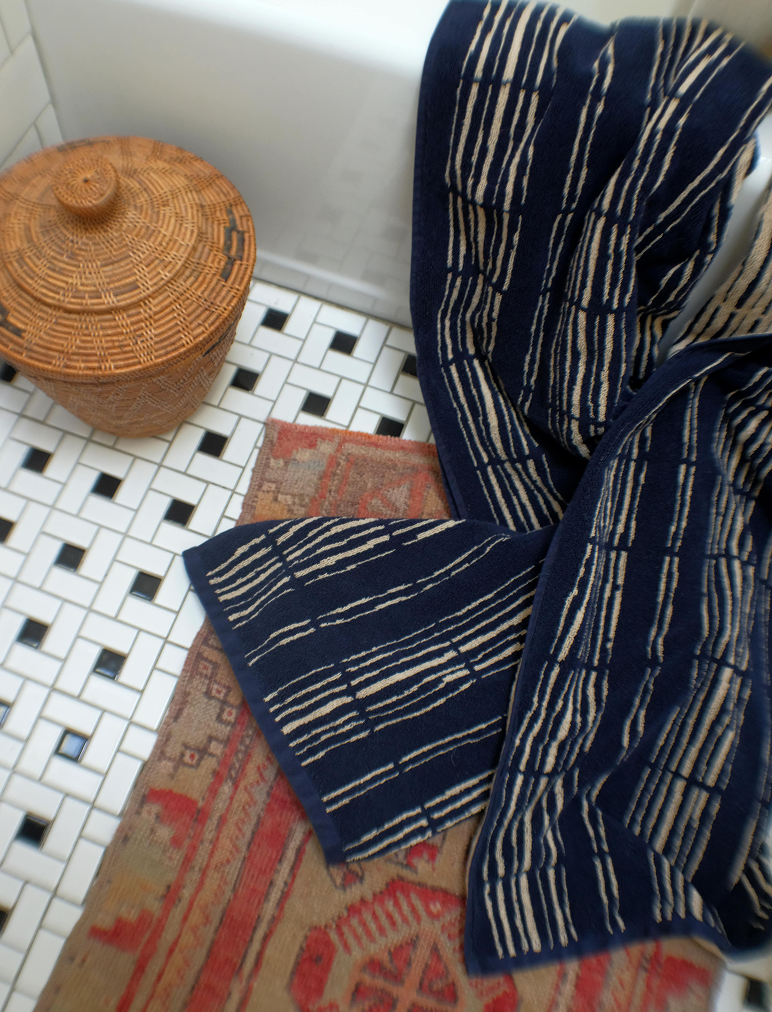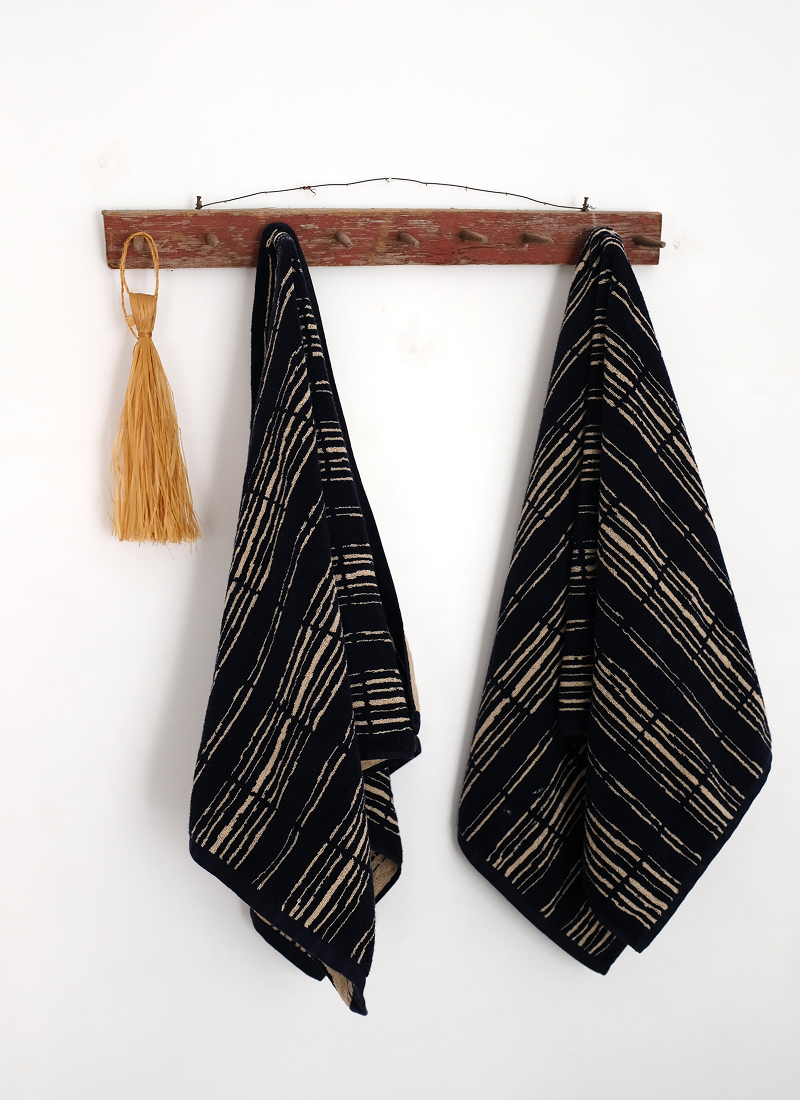Katazome techniques require a “dye-resistant paste [made of rice]...applied to [a] cloth through a stencil made of mulberry paper which has been waterproofed with persimmon juice.” Since the 12th century, and popularized between the years of 1790-1912, Katazome is often practiced upon kimonos and very commonly dyed with indigo.
The Alma print bears resemblance to its fellow Ester print, explore its differences and find it here.






Image Caption


